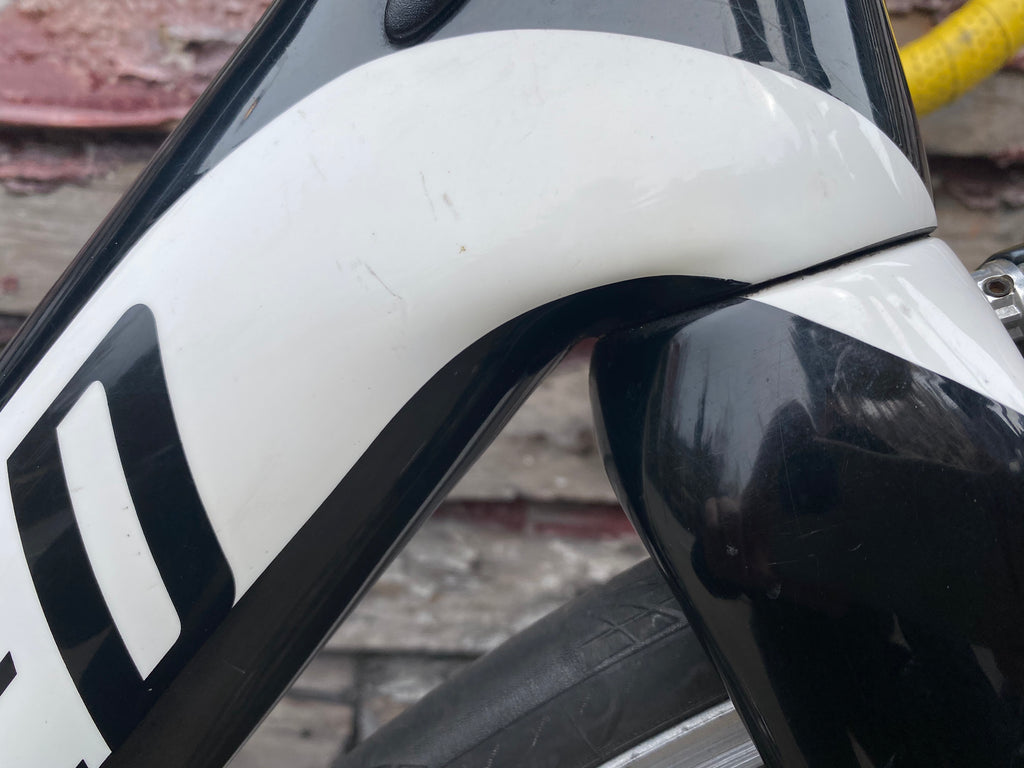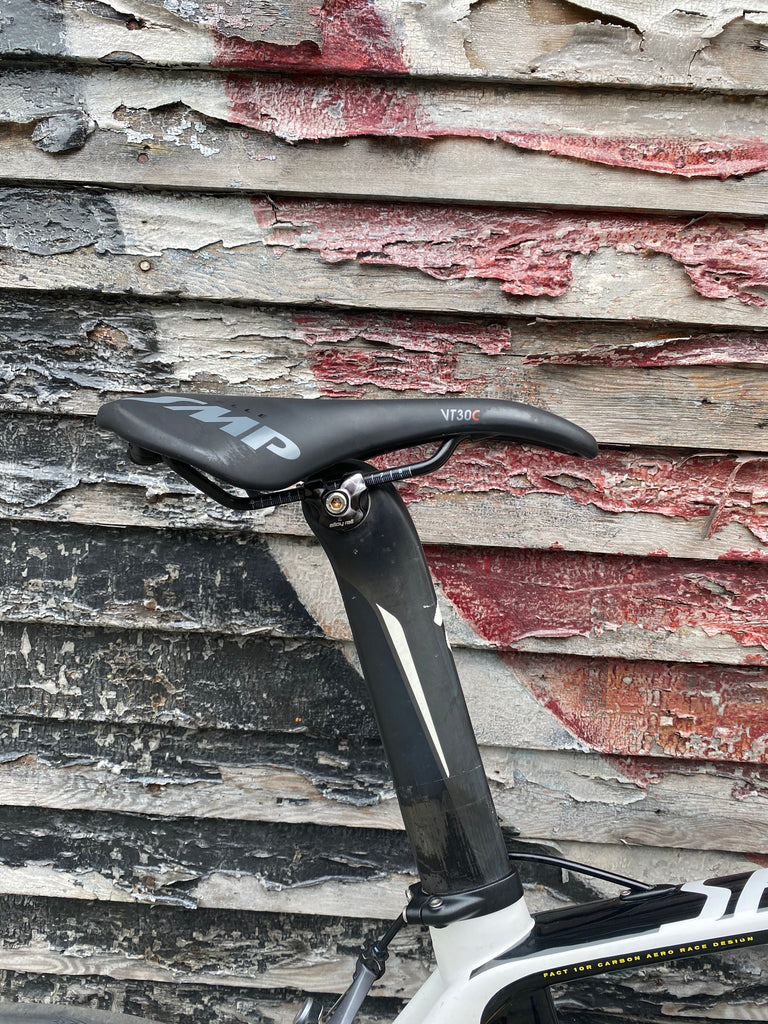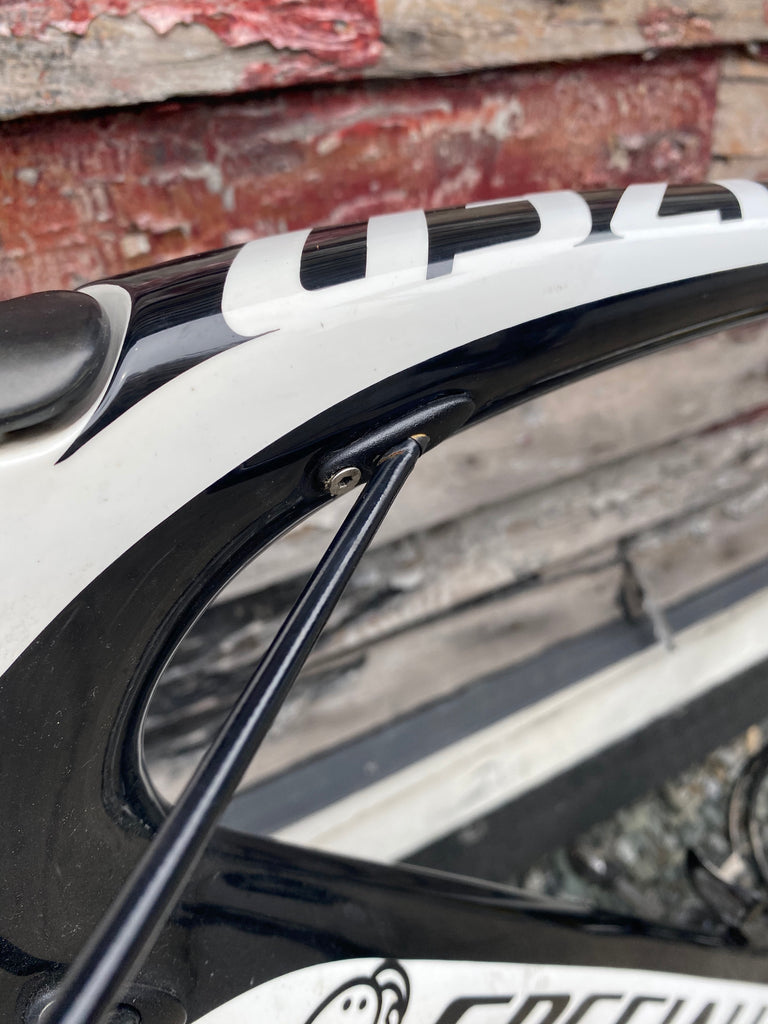
Rise of the Planet of the Aero | The 2012 Specialized Venge
2012 was my last year working in shops. And my the first *big* year of riding and racing. Still-pretty-simple road bikes ruled the roost. Sure, there was some internal cable housing here, a weirdly tucked away rear brake there, or a horrifically mounted Di2 battery way over there. But largely, bikes resembled what they had during the years and decades prior. Disc-brake equipped road bikes were but the stuff of hushed insider-whispers. Massive aero integration was a twinkle in the proverbial industry's eye. 25s were as wide as rubber got. And the domestication of the dog continued unabated.
And then, shockingly, something new came along — the aero bike. Well, not totally new. Cervelo had been hard at work on the aero bike formula for years with the Soloist (first launched 2002!) and the more-recently emerged S-Line. Felt was three years into the aggressive and boldly styled FRD line. But the broader cycling consciousness hadn't gotten down with the aero-sickness as they would in the years to come.
But then Specialized released details of a aero-bike developed with none-other than Mclaren's F1 Team. A bike that was "a UCI-legal machine that's more bike than aero" (whatever that means). For some reason Mclaren and Specialized briefly joined forces in the early 2010s. But like pretty much every other "car + bike" brand collab since the dawn of time, it petered out after a few years. Despite wind tunnel testing, no official aero figures were released for the Venge. But given that many companies still make unspecified claims about aero-gains even today, that's a hard thing to knock.
Ten years and countless iterations of aero bikes across pretty much every brand out there, and the original Venge feels pretty quaint. At a glance, it doesn't possess many of the elements you'd expect to see with aero in 2022. Almost zero integration, housing all over the place, pretty normal wheels, un-dropped seat stays, and the Toyota Camry of cranks—an FSA SLK.
But at the time, this was a big deal. Weighing in anywhere from 15.5 to 17 lbs depending on model, it was considered to be comparatively heavy to other things out there (Tarmacs, Madones, and Supersixes were frequently in the 14-15 lb range without much issue). It was never meant to outright replace the Tarmac, with Specialized making explicit that it was a "premium option ideal for certain races and certain racers." Looking back at that weight range now, it's hard not to chuckle at how drastically weight-expectations have changed.
Looking at this thing with 2022 eyes feels a bit like picking up a cracked iPhone 4 buried under paper in pens in a long-forgotten drawer. You wonder how this quaint, simple looking thing ever seemed futuristic or worth the oo-ing and aa-ing in the first place. It's not that the Venge is ungainly or wildly dated looking — in fact, I think it looks pretty good. But you can't help but feel embarrassed that something so simple blew our brains so much (and not that long ago). We'll feel the same in a decade about all that dazzles us now (if the world is still here, that is).
Specialized tinkered and iterated with the Venge for about eight years afterwards with off and on success (VIAS review coming someday, as soon as I can get one). And with the Venge discontinued as of 2021, it's hard not to suspect that the age of the aero bike just might be coming to a close. Sure, select models will probably live on, but the "every company has an aero model" moment is probably soon to pass. And either everyone is hanging on to them or they're all tucked away somewhere, but this gen of Venge is a bike that you just... don't see around much. So classic status? Probably not — but that's okay. It's worth remembering and looking at as the beginning of a very specific era of cycling — the rise of mainstream aero, the final period of reign for rim brakes, and (for better or for worse) the turning point move from age-old simplicity to exponential integration.
Let's take a look.

A decade on, the Venge still looks good. The arching top tube doesn't look wildly dated, and it's hard not to find charm in an aero-bike with plain-old seat stays.

Integration is minimal. Note the "duck bill" frame spacer/insert thing (which, at the time, looked pretty wild). Curiously, the headtube looks exceptionally tall for an aero bike. If there's one knock on this bike's aesthetics, that might be it.

Given what a staple it has become in aero bikes, it's surprising to see zero integration between frame and fork here. It'd be hard to criticize someone if the word "aero" never crossed their mind when looking at the Venge in 2022.

The aero post is probably the biggest aero aesthetic cue. Note the super simple collar design—no fancy seat post wedges or inserts, here.

Yep, here's your "integration." Internal housing and cabling was nothing new in 2012, but that didn't keep Specialized from claiming aero-benefits. In their words:
FULL INTERNAL CABLE ROUTING FOR BRAKE AND SHIFTER CABLES ON ALL FRAMES MAINTAINS THE CLEANEST LINES FOR OPTIMAL AERODYNAMICS.
Er, got it.

The exiting brake housing is pretty clean, though. Despite being worn hard and out away wet, the braking front and rear feels great.

Ah yes, the all important Cambered Airfoil X-Section seat stays. A heavily branded seat stay never to be mentioned again.

Dura-Ace C35 wheels have seen better days, but still roll smooth'n'true.

I forget the exact year, but this gen of Dura-Ace (and Ultegra) skewers was brilliant, and still look cool.

Looks aero to me!

Beyond a healthy appetite for eating cables in the shifter, this was a strong generation of Ultegra.

So far as I know, Specialized never made any aero claims (or gave reasoning) behind the duckbill spacer thing. But it sure looked cool. Trainer rust for character, of course.

Just like our friend Snrub, this bike comes from a time far far away.
Thanks to Michael for letting me shoot this neat ol'2012 gem! Got experience with this gen of Venge? Tell us about it below.
chris walker
As a newbie to crypto i lost alot of money, I would like to express my gratitude to Expert Bernie Doran for their exceptional assistance in recovering my funds from a forex broker. Their expertise and professionalism in navigating the complex process were truly commendable. Through their guidance and relentless efforts, I was able to successfully retrieve my funds of $150,000 providing me with much-needed relief. I highly recommend him on Gmail Berniedoransignals@gmail.com to anyone facing similar challenges, as their dedication and commitment to helping clients are truly impressive. Thank you, Bernie doran, for your invaluable support in resolving this matter
Howard
I got one of these late 2022. Just liked how the bike looked. That curved top tube gives the bike character in mho. Before riding this bike, I rode a Fuji transonic 2018 model, which served me well. But this bike somehow felt lighter than the Fuji, and it accelerates much faster as well. Every pedal stroke propels me in a way that I never felt before. I also had the opportunity to run a pair of 60mm deep carbon wheels, 28mm wide, with 28mm Continental gp 5000 tires (present set up). Yes, it takes 28mm wheels and tires. This took my game to a totally new level of riding, threatening riders who used to drop me at a moment’s notice. This thing holds speed amazingly well. I found that it slips through a head wind much easier that the Fuji, and because it takes less energy out of my legs to go, I can ride longer and faster. This is the fastest bike I have ridden so far. I can’t afford the new stuff out there right now, but with this cheaper option, I am surely able to give them a run for their money with my rim brake and all. I know some said that the ride on the Gen 1 venge was harsh, but I beg to differ with my Specialized model with these 28’s. I am loving it. Look me up on Strava Howard Marcelle. Trinidad&Tobago..
Enrique // UCLA Cycling
Got a 2012 Venge w/ the FSA Cranks as my away bike whenever I visit my folks in Puerto Rico. Totally feel you on the “ordinariness” of the bike on hindsight, but BOY does this one rip when you want to- snappy, nimble, and awesome power transfer. Wayyyy to long for my tastes and aggro fit (I have the 56 Venge and it has a longer reach than my Cannondale Synapse and SuperSix).
It also drives like a corvette- fast and super irresponsible on turns but boy does bombing a descent feel good on this machine.
Tyler
If you like to spin your cranks, and I mean really spin them, you need the FSA SLK. It features two sided pedaling, pre-molded chain drop wells, and durable non-Shimano casing to prevent fall apart.